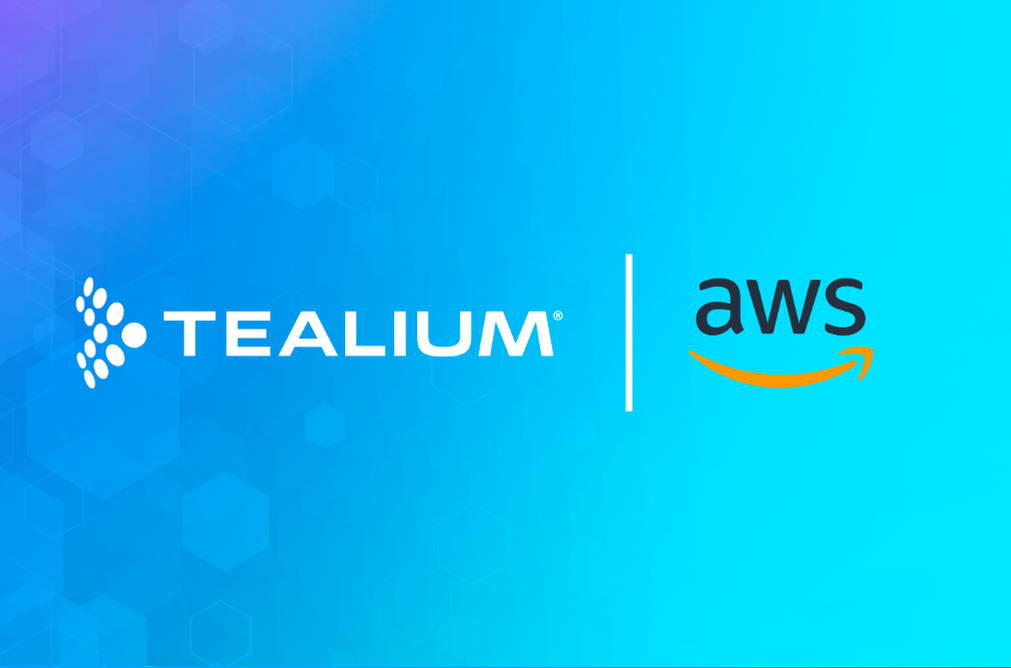The traffic reports from your analytics team might be telling a confusing story. Organic search is down, but not uniformly. Some queries still drive visitors to your site, while others seem to evaporate into thin air.
In a recent Tealium survey of CMOs, 40% reported traffic is holding steady, but 35% said traffic was decreasing, while only 16% saw any increases.
AI-powered tools like Google AI Overviews, Perplexity, ChatGPT, and Claude are fundamentally changing how people discover brands, with many users now getting their answers directly from AI summaries.
The data is stark: Some accounts suggest AI summaries reduce click-through rates by 50% when displayed in search results.
But here’s the good news: just as smart marketers learned to treat Google, social media, and email as distinct acquisition channels, forward-thinking teams are already treating AI assistants the same way. The question isn’t whether to engage with answer engines–it’s how to make your brand “answer-ready.”
The Discovery Shift: From Search to Answer
The traditional discovery model looked like this: Search → Site → Explore → Action. A customer would search Google, click through to your site, browse multiple pages to gather information, and eventually take action.
The new model looks radically different: Question → Answer → Action. Users ask an AI assistant a question, receive a synthesized answer with citations, and either act immediately or ask follow-up questions–often without ever visiting your site.
In practice, assistants are changing how people find and decide through mechanics we can already see taking shape. Once you notice them, they feel obvious.
Latency reduction: Getting an immediate answer beats clicking through multiple sites and piecing together information yourself.
Confidence scoring: When an AI cites three authoritative sources that agree, users trust the answer enough to act without additional validation.
Citation snippets: Seeing “According to [Your Brand]…” in an AI response builds awareness and credibility even when users don’t click through.
The implication? Your content strategy needs to optimize for being quoted correctly by AI, not just for driving clicks.
What “Answer-Ready” Content Actually Looks Like
Answer-ready content isn’t about gaming AI systems or stuffing keywords. It’s about making verifiable facts easily discoverable and digestible for both machines and humans.
Think of it as moving from blog posts to fact cards (or answer blocks). Here’s what works:
Product specifications and capabilities: Clear, structured details about what your product does, what it integrates with, and what technical requirements it has. Not marketing fluff–actual specifications that answer technical questions.
Pricing models and ranges: Even if you don’t publish exact prices, providing pricing frameworks (“starts at X” or “typically ranges from X to Y depending on…”) helps assistants guide users accurately. Full pricing and inventory will be important though if you want to take advantage of Agentic Commerce Protocols.
Compliance and certification claims: Industry certifications, security standards, regulatory compliance. These are binary facts that assistants can cite with confidence.
Integration matrices: What systems does your product work with? What file formats do you support? What APIs are available? These structured details are gold for AI assistants.
Availability and coverage: Geographic availability, supported languages, implementation timelines. Clear answers to logistical questions that buyers always ask.
The key is structure. Use schema markup where applicable. Maintain consistent product naming across all pages. Create canonical sources for each major fact category so you’re not contradicting yourself across different pages or documents.
From Blog Blather to Fact Blocks
Audit your highest-traffic blog posts and resource pages. How many paragraphs does someone need to read before they get to the actual answer? If you’re like most B2B brands, the answer is “too many.”
Long-form content still has its place for thought leadership and deep exploration. But for answer engines, you need assets optimized for quick extraction:
Re-platform select pages into skimmable “assistant snippets.” Take your most-asked questions and create dedicated FAQ pages with direct, citation-worthy answers. Each answer should be complete in 2-3 sentences, with links to longer resources for those who want depth.
Define canonical truth tables for product facts. Assign owners for each category of facts (pricing, integrations, compliance, etc.). Establish update cadences. Build verification workflows so outdated information doesn’t linger on secondary pages.
Create comparison frameworks that assistants can parse. Instead of writing “Our product is better because…” create honest comparison tables showing where you excel and where alternatives might fit better for certain use cases. Fact-based comparisons increase clarity for users and assistants alike.
Think Wikipedia meets your product docs. Every major fact should have a clear source, an owner responsible for accuracy, and a regular review schedule.
Tracking Assistants as a Source
You can’t optimize what you don’t measure. Most analytics suites don’t natively classify “assistants” as their own channel. So unless you tag or group it, assistant traffic blends into organic or referral buckets, making analysis difficult.
Start with UTM conventions. Create a standard parameter for assistant specific content strategies to track the incoming referrals: ?utm_source=assistant or ?assistant_source=perplexity (or whatever naming convention fits your stack). You’ll need to coordinate this with anyone who might link to you from AI-generated content, but standardizing early beats trying to parse referrer strings later.
Build cohort segments immediately. Create audience segments comparing assistant-referred visitors against traditional organic traffic. Track key metrics:
- Conversion rates (are they higher because of pre-qualified intent?)
- Session duration (probably shorter–they know what they want)
- Page paths (do they skip your navigation and go straight to product pages?)
- Return visitor rates (do they come back, or is this one-and-done?)
Instrument for attribution. When someone converts, capture how they discovered you. Add a simple post-purchase or post-signup question: “How did you first learn about us?” Include “AI assistant/chatbot” as an option alongside traditional sources.
These cohorts will help you understand whether assistant-referred traffic is worth optimizing for..
Activation: When Answers Send You Traffic
Here’s the scenario: an AI assistant cites your product as a solution to someone’s problem. The user clicks through to learn more. They land on your site with high intent and specific context about what they’re looking for.
What happens next?
Too often, they hit a generic homepage or a blog post that doesn’t acknowledge their specific need. They bounce. You’ve lost a pre-qualified lead because your site wasn’t optimized for answering the next logical question.
Offer immediate next steps for high-intent visitors:
- Calculators or assessment tools that let them quickly evaluate fit
- Micro-forms that capture their specific use case without requiring a full demo request
- Comparison one-pagers that address “Why you vs. competitor X?” directly
- Implementation timelines that answer “How long will this take?” upfront
Personalize on first view. If you can detect that someone came from an assistant referral (through UTM parameters or referrer data), tailor the experience:
- Show a banner acknowledging how they found you: “Researching customer data platforms? Here’s what you need to know…”
- Surface the most relevant case study or proof point based on the question they likely asked
- Offer an immediate next action that matches their research stage
The goal isn’t to interrupt their research–it’s to accelerate their ability to make a decision by providing exactly what they need in the moment they need it.
Governance: Don’t Feed the Hallucination Machine
AI assistants are sophisticated, but they’re not infallible. They can synthesize information from multiple sources incorrectly. They can cite outdated facts. They can conflate similar products or confuse specifications.
The last thing you want is an AI assistant confidently stating incorrect information about your product because you had conflicting claims on different pages or outdated specs lingering on your site.
Keep public facts consistent across all touchpoints:
- Audit your site for duplicate or contradictory content about core facts
- Consolidate multiple blog posts covering similar ground into canonical resources
- Update or remove outdated content rather than letting it accumulate
- Use redirects to point old URLs to current information
Establish update cadences and change logs:
- Pricing changes? Update all mentions within 24 hours
- New integrations? Log what changed and when
- Deprecating features? Make it clear what’s current vs. legacy
Avoid marketing fluff on fact pages. Save the storytelling for thought leadership content. When someone (or their AI assistant) is looking for specifications, compliance details, or pricing information, give them exactly that–not a 500-word journey through your brand values.
Think of it this way: every piece of public information you publish might get cited by an AI assistant. If you wouldn’t want that claim attributed to you in front of a prospect, don’t publish it.
Real-World Patterns Worth Watching
While this shift is still evolving, patterns are emerging from early adopters:
Google AI Overviews and Perplexity are providing direct answers with cited sources. Brands cited by assistants gain visibility and perceived authority, even without the click.
Wikipedia and Stack Overflow have perfected the art of canonical truth maintenance through community moderation. Their principles–single source of truth, clear ownership, transparent updates–work for enterprise content too.
Government agencies and standards bodies use structured FAQs with schema markup to ensure their authoritative information surfaces correctly in AI responses. B2B brands can learn from these public-sector approaches to maintaining factual integrity.
The common thread? These sources prioritize accuracy and structure over SEO optimization tricks. They make information accessible to machines without sacrificing human readability.
The Tealium Angle: Infrastructure for Answer-Ready Content
Making your brand answer-ready requires more than content strategy–it requires data infrastructure that can:
Centralize assistant-readable facts through data governance workflows, ensuring consistency across all customer touchpoints
Capture assistant referral attributes in your customer data platform, unifying these signals with other behavioral and contextual data
Route next-best actions based on the specific context someone brings from their AI assistant interaction
When someone arrives via an assistant referral, your CDP should recognize that context and activate the appropriate experience across your site, email, and other channels immediately.
What to Do This Quarter
Ready to make your brand answer-ready? Here’s your 90-day implementation plan:
Month 1: Audit and Baseline
- Identify your top 20 most-asked questions from search, support, and sales
- Audit existing content for contradictions or outdated facts
- Set up tracking for assistant referrals in your analytics
- Create baseline cohorts to measure against
Month 2: Publish and Structure
- Convert your top 10 questions into clean, citation-worthy FAQ answers
- Implement schema markup on key fact pages
- Create canonical truth tables with assigned owners
- Launch one “assistant snippet” pilot on your highest-traffic topic
Month 3: Measure and Optimize
- Compare assistant-referred cohorts against traditional organic traffic
- Survey recent customers about AI assistant usage in their research
- Identify which facts are getting cited in AI responses (use brand monitoring tools)
- Refine your content based on what’s working
Don’t try to boil the ocean. Start with your highest-value topics–the ones where customers need clear, factual answers and where incorrect information could cost you deals.
The Bottom Line
AI assistants aren’t replacing search, they’re redefining it.. While your competitors chase clicks, you can win by being cited accurately, building authority even when visitors don’t reach your site.
The brands that win will publish verifiable facts in structured formats, track how assistants refer traffic, and activate high-intent visitors with contextually relevant next steps.
This isn’t about chasing the latest marketing trend. It’s about acknowledging that your customers are already using AI assistants to research purchases. The question is whether you’re making it easy for those assistants to represent your brand accurately.
Quick Facts: Answer Engine Optimization
The Impact
- AI summaries cut click-through rates by 50%
- Assistant-referred traffic converts higher (pre-qualified intent)
- AI search traffic up 357% year-over-year
What Works
- Short answers especially for AI Search Answers
- Schema markup on fact pages
- Canonical sources with assigned owners
- UTM tracking for assistant referrals








